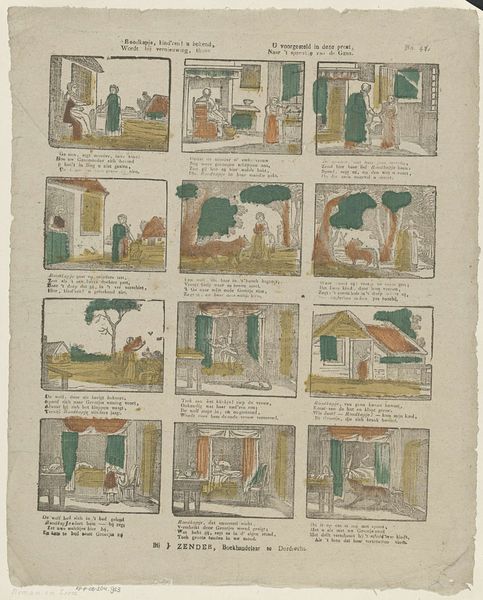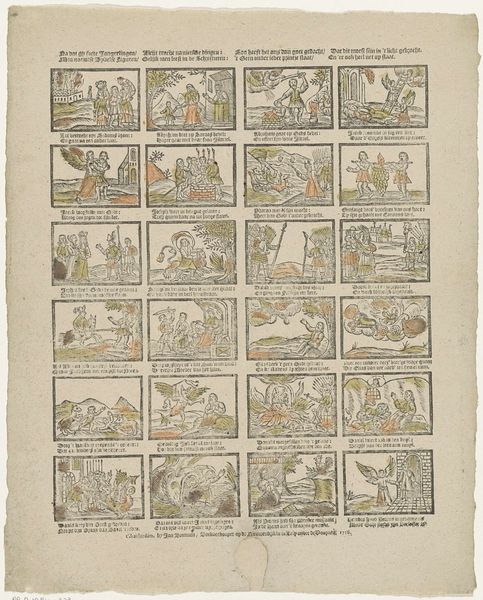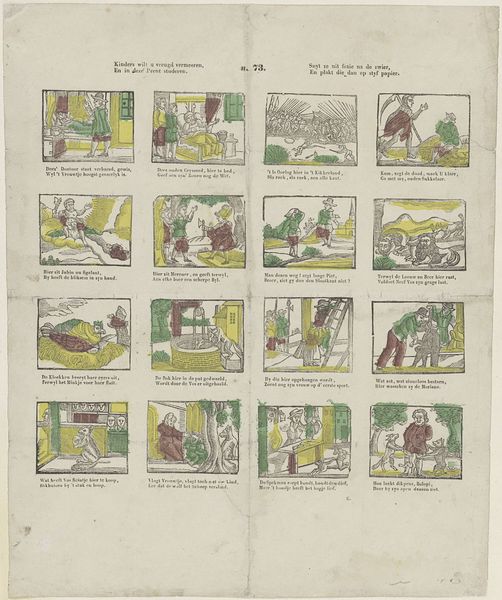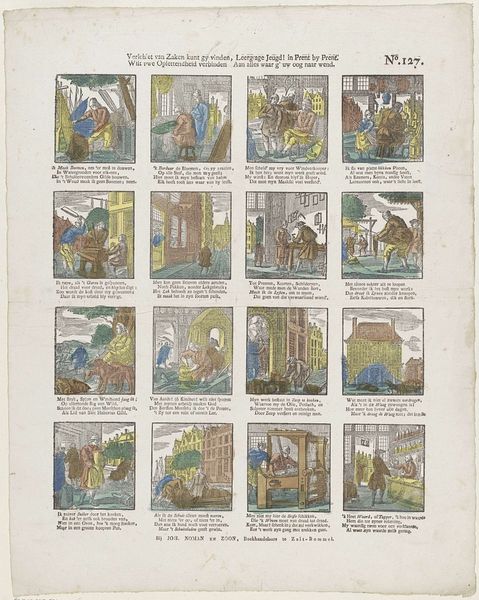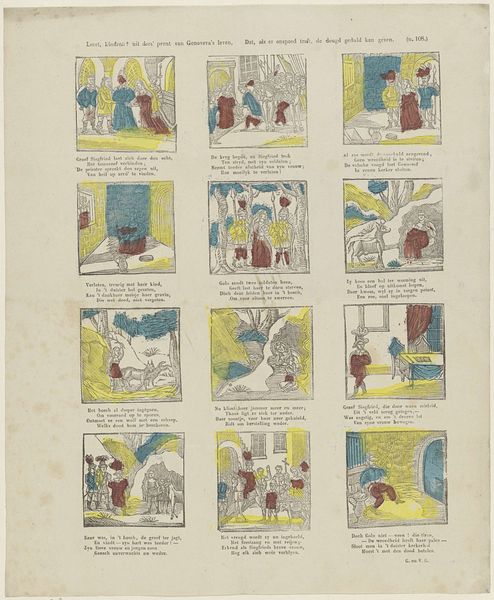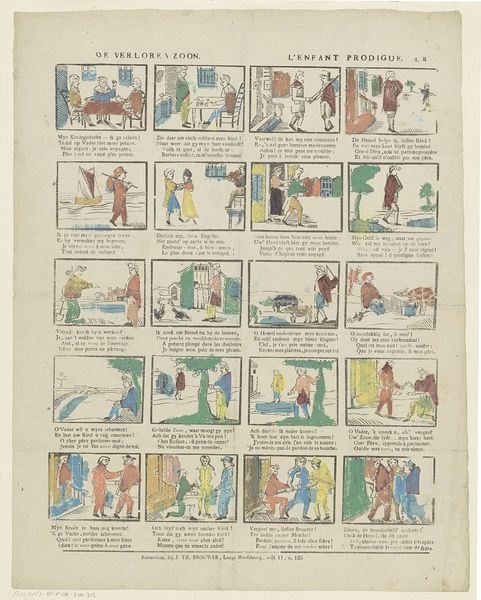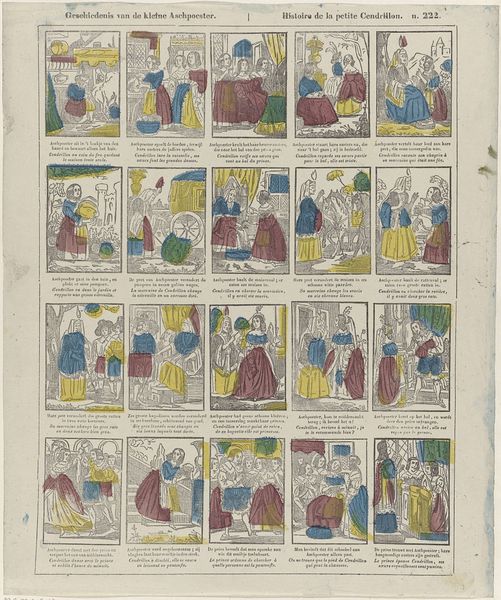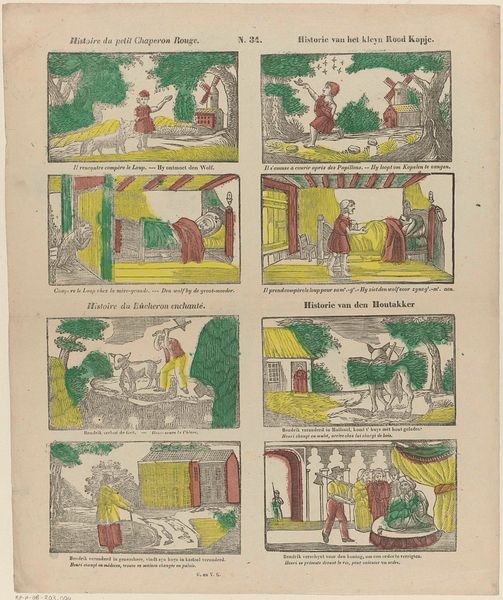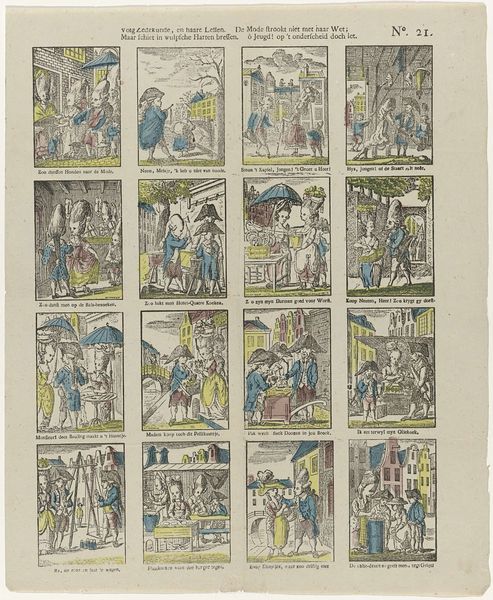
Vices et Vertus d'Enfants / Kinder deugden en gebreken 1866 - 1902
0:00
0:00
lithograph, print, etching
#
narrative-art
#
lithograph
# print
#
etching
#
child
#
genre-painting
Dimensions: height 425 mm, width 305 mm
Copyright: Rijks Museum: Open Domain
Franciscus Antonius Beersmans created this print, "Vices et Vertus d'Enfants," using a graphic process that allowed for multiple impressions. The artwork, made from paper, ink and color, uses lithography to make its images, where the artist likely drew each scene on a stone or metal plate. This was then treated to hold ink in only those areas, allowing for repeated transfers onto paper. The addition of color by hand suggests a desire to enhance the visual appeal, but it also indicates a commercial intent – to produce something attractive for the market. Each scene is neatly framed, suggesting order and control, yet the stories within hint at the chaos of childhood. The labor of the artist in creating the original images, combined with the industrial process of printing, speaks to a tension between handmade artistry and mass production. By considering the materials and methods used in its making, we can see how this print bridges the worlds of art and everyday life, challenging traditional ideas about what art should be.
Comments
No comments
Be the first to comment and join the conversation on the ultimate creative platform.



